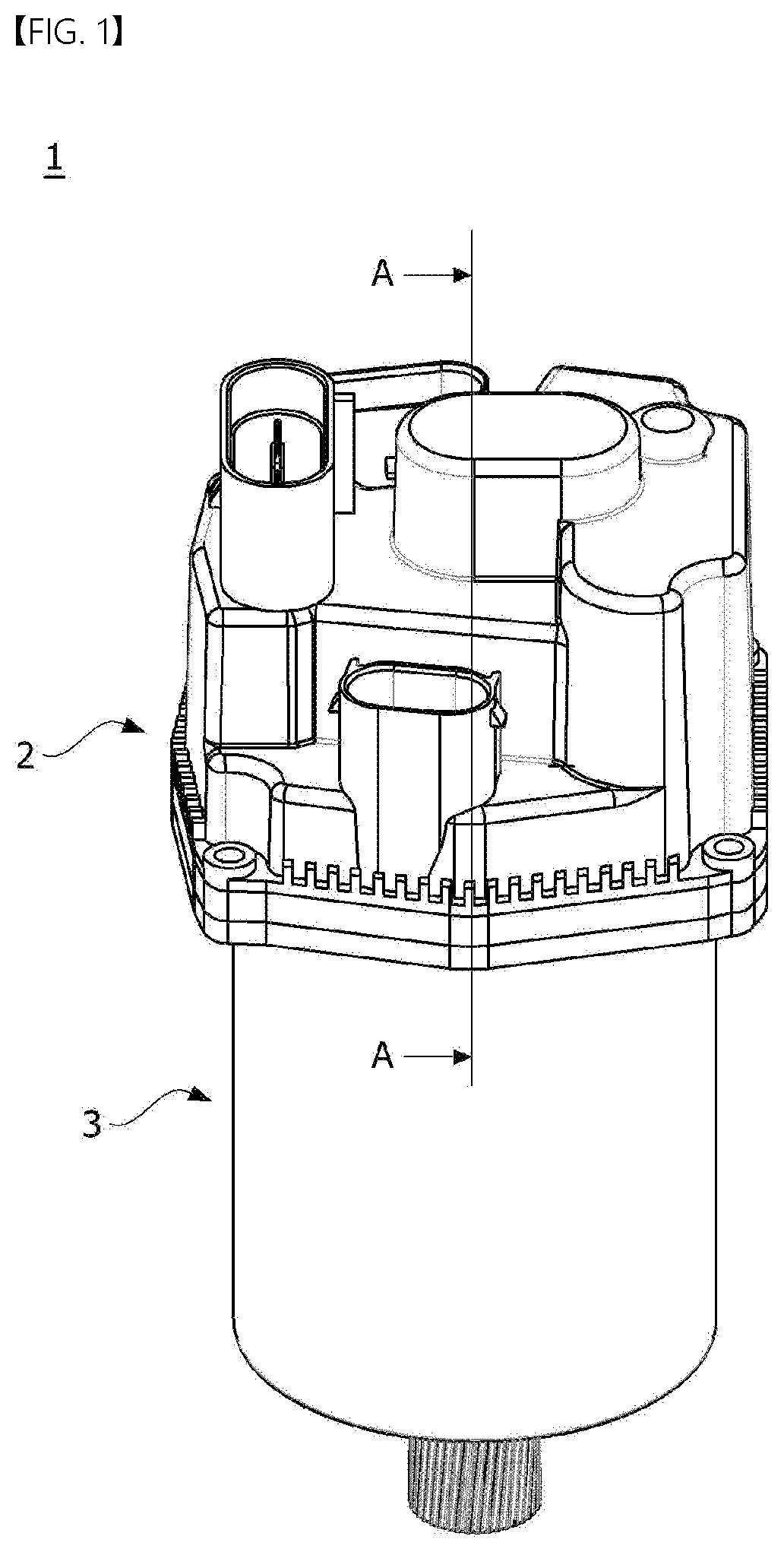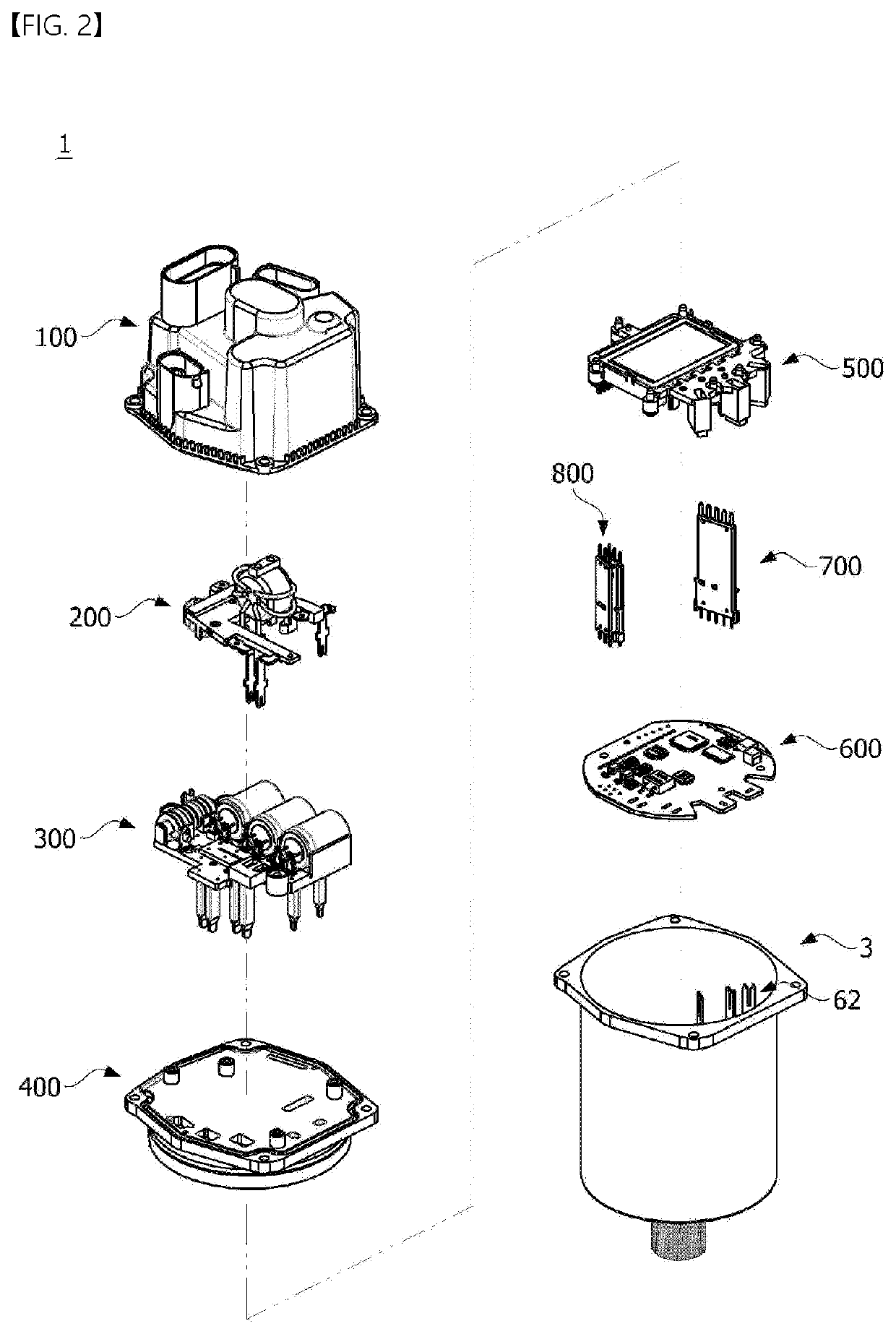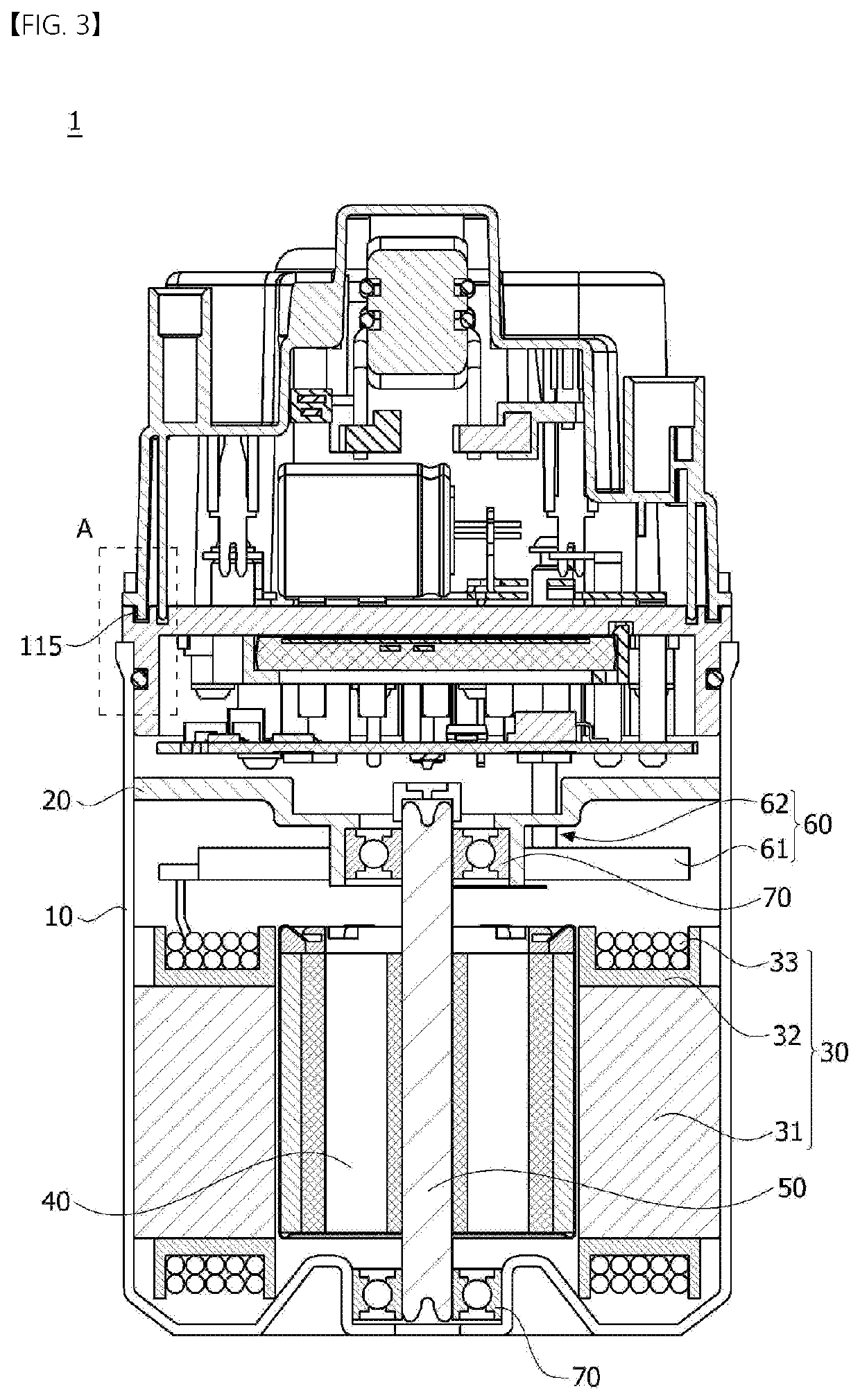Controller and motor assembly comprising same
- Summary
- Abstract
- Description
- Claims
- Application Information
AI Technical Summary
Benefits of technology
Problems solved by technology
Method used
Image
Examples
first embodiment
[0122]FIG. 2 is an exploded perspective view of the motor assembly according to the embodiment in which a power module unit is disposed, FIG. 3 is a cross-sectional view illustrating the motor assembly according to the embodiment, and FIG. 4 is a plan view of the motor assembly according to the embodiment. Here, FIG. 3 may be a cross-sectional view taken along line A-A in FIG. 1.
[0123]Referring to FIGS. 1 to 3, the controller 2 may include a controller housing 100, a common-mode (CM) filter unit 200, a differential-mode (DM) filter unit 300, a controller cover 400, a power module unit 500 according to the first embodiment, a substrate 600, and a connector unit. Here, the connector unit may include a first connector 700 and a second connector 800. Here, the controller housing 100 may be referred to as a first housing. In addition, the controller cover 400 may be referred to as a first cover unit.
[0124]The connector unit may pass through the controller cover 400. Here, the connector ...
second embodiment
[0318]FIG. 36 is an exploded perspective view illustrating the motor according to the embodiment in which the power module unit 500a is disposed.
[0319]Referring to FIGS. 1 and 36, the motor assembly 1 according to the embodiment may include the controller 2 and the motor 3. In addition, the controller 2 may include the controller housing 100, the CM filter unit 200, the DM filter unit 300, the controller cover 400, the power module unit 500a according to the second embodiment, the substrate 600, the first connector 700, and the second connector 800.
[0320]Hereinafter, in describing the motor assembly 1 according to the embodiment in which the power module unit 500a according to the second embodiment is disposed, the same components described in the motor assembly 1, in which the power module unit 500 according to the first embodiment is disposed, are described with the same reference numerals, and thus detailed descriptions of the controller housing 100, the CM filter unit 200, the ...
PUM
 Login to View More
Login to View More Abstract
Description
Claims
Application Information
 Login to View More
Login to View More - R&D
- Intellectual Property
- Life Sciences
- Materials
- Tech Scout
- Unparalleled Data Quality
- Higher Quality Content
- 60% Fewer Hallucinations
Browse by: Latest US Patents, China's latest patents, Technical Efficacy Thesaurus, Application Domain, Technology Topic, Popular Technical Reports.
© 2025 PatSnap. All rights reserved.Legal|Privacy policy|Modern Slavery Act Transparency Statement|Sitemap|About US| Contact US: help@patsnap.com



